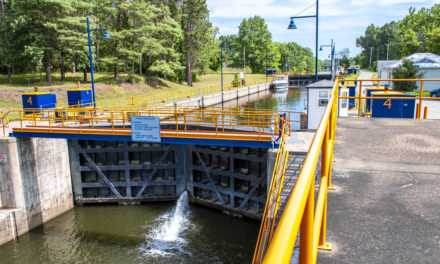A toll attendant on the New York State Thruway will be going the way of the cassette tape, telephone operator, and Blackberry by the end of 2020, according to state officials.
The state has awarded a $355.3 million design-build contract to transform the state’s current toll booths – a mix of E-Z Pass lanes and cash tolling – to cashless tolling. The plan, according to the governor’s office, is to have cashless tolling at every toll booth within 18 months.
Cashless tolling has been implemented in phases across the state, with the first major effort nine years ago in Woodbury with the E-ZPass express lanes. Two years ago, all New York City bridges and tunnels that are operated by MTA Bridges and Tunnels went cashless.
For those who have E-ZPass transponders, the lanes will now operate at 20 m.p.h. vs. five or 15 m.p.h. (as is the case at the Exit 24 barrier in Albany). Those who do not have E-ZPass will be sent a bill in the mail.
Construction is scheduled to begin across the Thruway system in late Summer/early Fall with the installation of gantries and cashless tolling equipment. When it is operational on the Thruway’s ticketed system, motorists will drive seamlessly under gantries with state-of-the-art sensors and cameras that read E-ZPass tags and take license plate images so vehicles no longer have to stop to pay tolls.
Vehicles with E-ZPass tags are automatically charged and vehicles without E-ZPass tags will have their license plate image captured and a toll bill mailed to the registered owner. Customers who pay using Tolls By Mail will pay the same toll rate previously paid by cash customers, and E-ZPass customers with New York accounts will continue to receive a five percent discount.
As part of the Design Build project requirements, the switchover to cashless tolling will take place by the end of 2020 at 52 Thruway interchanges and toll barriers.
Following the switchover, the existing toll plazas and barriers will be removed in phases. During the construction phase, drivers will continue to travel through existing toll lanes at reduced speeds without stopping until the booths are removed and road reconfigurations are complete. Drivers must use caution around the toll plazas during this time, as it will be an active construction zone. The posted speed limit when traveling through the toll lanes will be 20 MPH.



